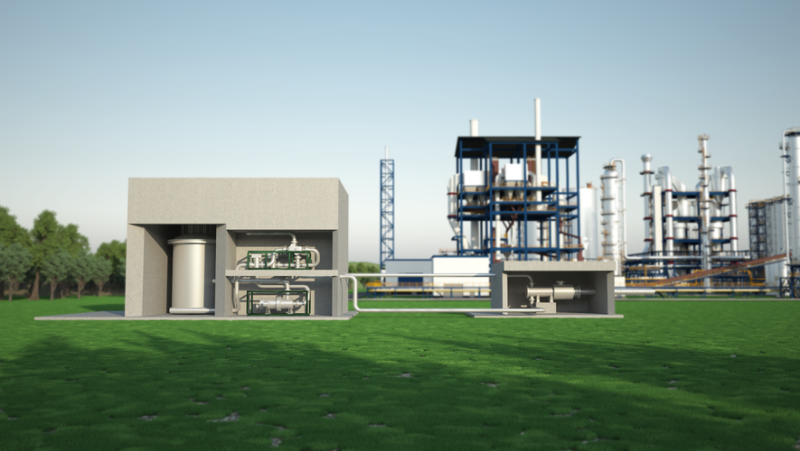Less powerful, safer, carbon-free… what the first French mini-nuclear reactor could look like ?

Le développement de ces petits réacteurs de quatrième génération est en plein essor. VISUEL JIMMY ENERGY
With a power of 10 megawatts, this mini-reactor could be directly connected to factories, a first in France.
The French start-up Jimmy submitted this Monday, April 29, to the government the first request for authorization in France for a mini-nuclear reactor intended to be connected directly to factories, a step which launches an investigation process by the Nuclear Safety Authority (ASN).
If the file passes all the stages of investigation and authorization, the mini-reactor with a power of 10 megawatts (MW) could be directly connected to the industrial complex of the sugar group Cristal Union/Cristanol de Bazancourt (Marne), which produces alcohol and bioethanol.
Providing carbon-free heat
This reactor is a kind of nuclear fuel boiler whose objective is to "provide carbon-free heat" (steam) to industry "by replacing gas burners", which emit gases greenhouse effect in the atmosphere, explained the company created in 2020 in a press release.
"The generators designed by Jimmy, with a lifespan of 20 years, are part of an energy mix complementary to the nuclear reactors of large and medium power and renewable energy sources"which today provide carbon-free electricity, she added.
"We offer a generator that adapts to any industrial site that consumes steam to make it a source of heat, cheaper than gas and carbon-free", explains Antoine Guyot, the co-founder. Its technology is based on that of high temperature reactors cooled with helium. "Our principle has been to take all the proven technologies in industrially viable reactors and to make them apply on a small scale".
First file filed in France
This project is the first to submit a "creation authorization request file", among the ten small modular reactor (PRM, or SMR in English) projects currently monitored by the nuclear watchdog in France, the ASN, according to this authority which is now awaiting referral to the ministry. The educational work can then take at least three years.
Smaller, less powerful than their big brothers in the historic nuclear fleet (which are 1 000 MW or more), and therefore presented by their promoters as intrinsically safer, SMRs must be able to produce electricity, but also provide heat to industries (glass, chemicals, steel…), today very dependent on fossil fuels which are harmful to the climate.
No more requirements
L’ASN promises to be "much more demanding" particularly in terms of safety vis- with regard to these new objects, intended to be mass-produced and deployed in numbers to be economically profitable. Tomorrow, they could be installed in densely populated areas, raising new issues, notably public acceptability.
In total, more than 80 projects have been identified around the world, of varying maturity, but for the moment, only Russia and China have announced that they have been commissioned, according to the 2023 report on the state of the nuclear industry produced by independent experts.



